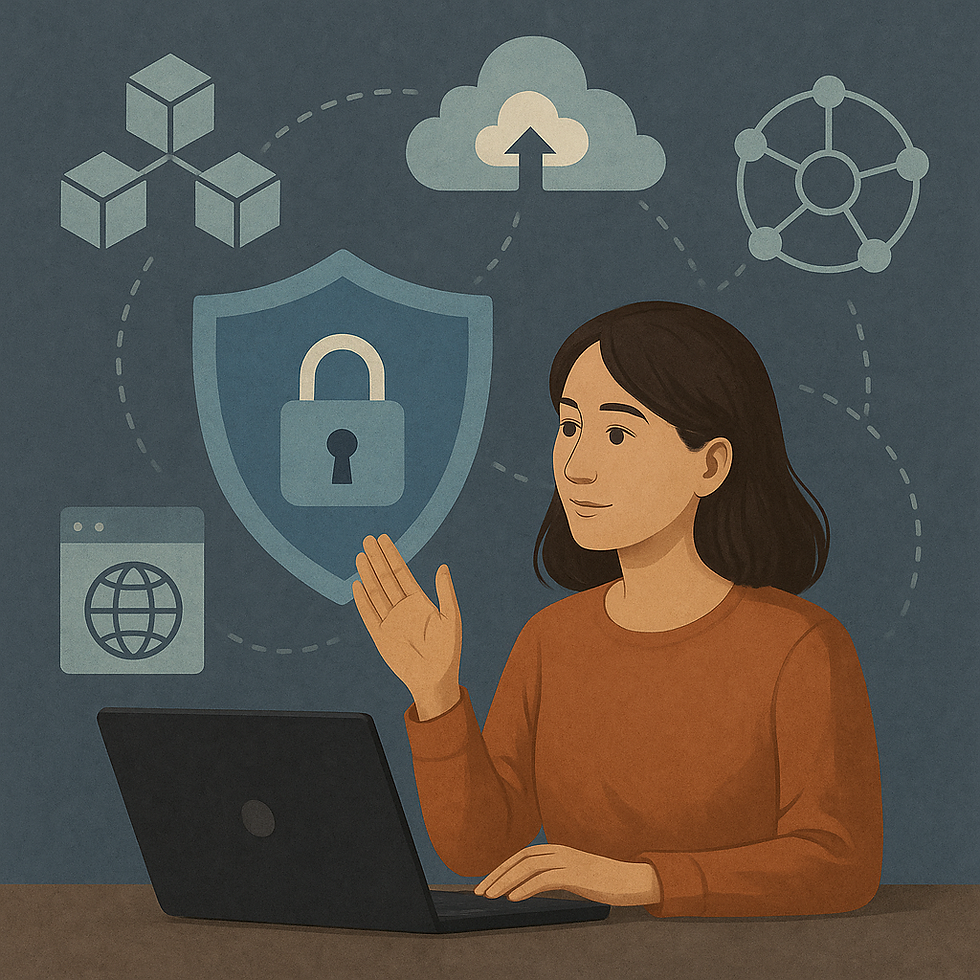The Hidden Dangers of Public Wi-Fi
- fleurtechmedia
- Sep 20
- 3 min read

When you settle into a café, airport lounge, or hotel lobby and connect to free Wi-Fi, it feels like a convenience we all deserve in a connected world. The problem is that public Wi-Fi networks are often the perfect hunting ground for hackers. What seems like an easy way to check your email or stream a show can also be an open invitation for cybercriminals to snoop on your activity.
Public Wi-Fi is risky because it lacks the protections you usually find in your home network. Many of these networks do not require a password, or if they do, the same password is shared with everyone. This creates a wide-open environment where attackers can intercept the data traveling between your device and the internet. Think of it like having a private conversation in a crowded room. Anyone nearby can overhear if they’re paying attention.
One common attack that takes place on public Wi-Fi is called a man-in-the-middle attack. In this scenario, a hacker positions themselves between you and the internet. When you visit a website or log into an app, your information flows through their system first. This means your usernames, passwords, and even sensitive data like banking details can be captured before they ever reach the site you intended.
Hackers also create fake Wi-Fi networks, often called “evil twins.” These mimic legitimate networks with names like “Free_Airport_WiFi” or “CoffeeShop_WiFi.” Unsuspecting users connect, thinking they are on a trusted network, but they’ve actually handed control to the attacker. Once connected, anything you do can be monitored, altered, or stolen.
The dangers don’t stop there. Even without sophisticated tricks, public Wi-Fi makes it easier for hackers to spread malware. If your device isn’t updated or if you accidentally click on a malicious link, the attacker can install harmful software that tracks your activity or locks your files for ransom.
So what can you do to stay safe without giving up the convenience of staying connected on the go? One of the best tools available is a Virtual Private Network, or VPN. A VPN creates a secure tunnel for your internet traffic. Even if someone intercepts your data on a public network, all they’ll see is scrambled information they can’t use. VPNs are widely available and user-friendly, making them a solid choice for everyday protection.
If a VPN isn’t an option, consider using your smartphone’s personal hotspot instead of public Wi-Fi. This creates a direct connection through your cellular network, which is typically much more secure. While it might use up some of your data plan, it provides a safer way to browse, especially if you’re handling sensitive information.
Another easy habit to adopt is checking whether the websites you visit start with “https.” That little “s” stands for secure, and it means the site is encrypting the data you exchange. While not foolproof, it adds another layer of protection when you’re online.
Public Wi-Fi isn’t inherently bad, and millions of people use it every day without incident. The key is being aware of the hidden dangers and taking steps to protect yourself. By using a VPN, relying on your hotspot when possible, and paying attention to secure connections, you can enjoy the benefits of connectivity without putting your private information at risk.
In today’s world, staying connected is important, but staying safe is even more so. A little caution and a few smart choices can make all the difference when it comes to keeping hackers out of your digital life.



Comments